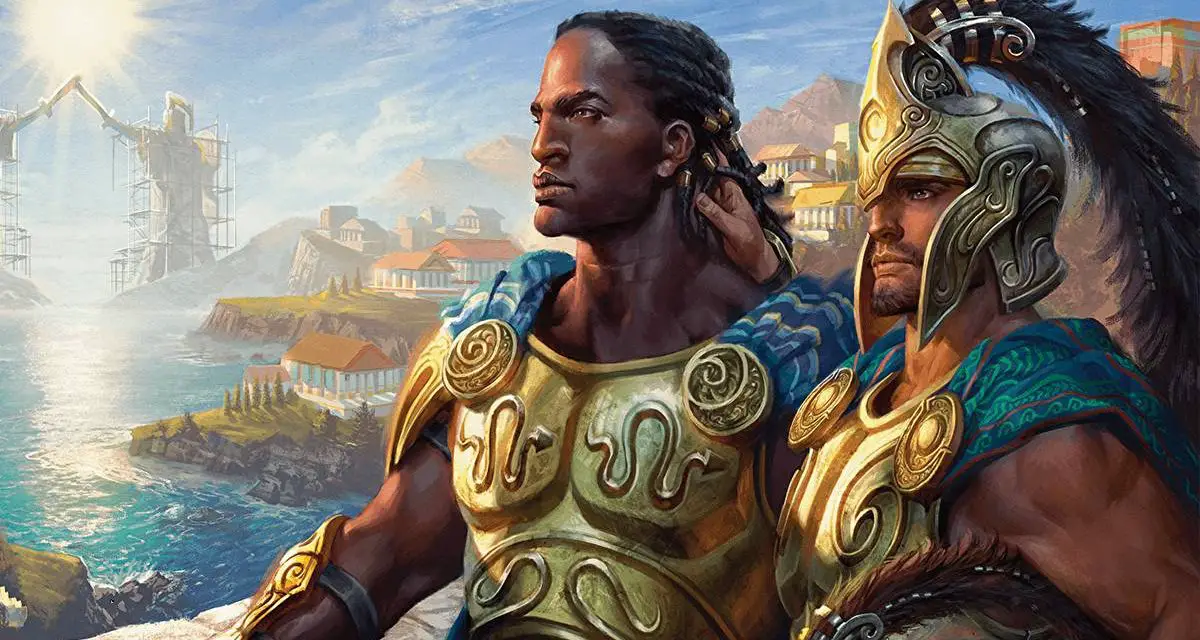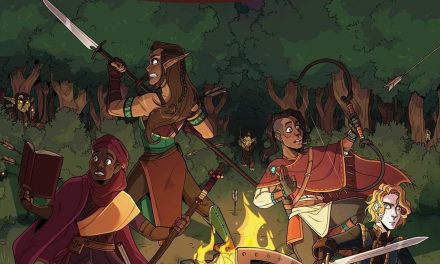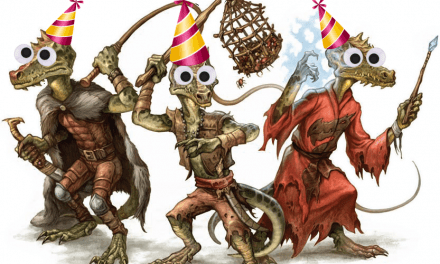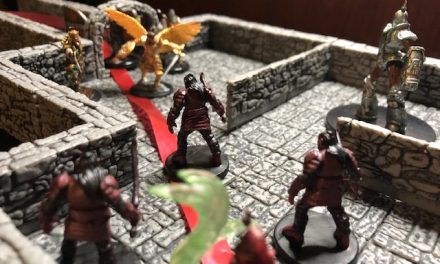If I must, I will die on the hill of the importance of holding a session zero for your D&D campaigns.
Ok… That’s probably a little dramatic, but let’s be real: you have to make sure that everyone in the group is on the same page.
For Dungeon Masters, this lets them know what kind of game to prepare. It establishes themes and the expectations of the players. Not only does this create a clear goal for the game, but it also makes game prep much easier!
For Players, it’s their chance to have clear input on the story to be told. They establish things that they want and things that they don’t. Furthermore, it makes it easier for them to make characters that are clearly tied to the story in ways that encourage dynamic roleplaying!
Not only is the Session Zero a fun and creative exercise for everyone in the group, it’s the bedrock of a truly unforgettable campaign.
What Is a Session Zero?
As you probably expect from the name, Session Zero is the session had before the campaign begins. It’s where important information for the campaign is covered, game expectations are set, and characters are created.
At its core, the Session Zero is taking the extra time to make sure that this is a story for everyone at the table.
Session Zero is typically guided by the DM, but it’s a fundamentally group activity.
A Session Zero may be relatively quick or it may last for 3-4 hours. Whatever the case, Session Zero should last exactly as long as it needs to. If it’s rushed or too drawn out, it starts to become ineffective or boring.
If everyone shows up ready to contribute to the Session Zero, I find that they can typically be done in 2-3 hours. This usually also gives some time to fit in a quick combat or precursor to what lies ahead in the story.
As a DM, you may even run a quick combat that isn’t part of the story so that everyone can get a feel for how their character handles. Celebrating a Session Zero with some dice rolling is always fun!
Why Should Your Group Have a Session Zero?
D&D is a hobby that does require a lot of time investment from everyone in the group. Why shouldn’t the story be in line with what everyone is hoping to get out of their time gaming?
If the group expresses interest in a game with plenty of exploration and some horror vibes, you might propose something like the Icewind Dale: Rime of the Frostmaiden module.
Conversely, if the group is curious to check out Rime of the Frostmaiden, this is where you let them know that the module has lots of exploration and a strong horror feeling to it.
The biggest reason to have a Session Zero is to create a tighter story and establish the game’s framework so that everyone can fully immerse in the story being told by the group.
The Key Takeaways of a Session Zero
So let’s take a look at the key takeaways of a session zero.
There are plenty of other things that you can include in yours, but these 7 takeaways largely cover all of your bases.
Campaign Themes and Setting
The first step is establishing what the game’s theme and setting are. You want to make sure that you’ve got everyone’s “buy in” to the story that will be told.
Are we playing a game of high-magic dungeon diving? Are we playing a pirate campaign? Will this story have a horror theme?
It’s always awkward when someone gets excited to play a character who just simply does not fit into the story. Narrowing down the focus to clearly define the type of story being told helps players know what type of characters to make in addition to helping the DM know what kind of adventures and plot hooks to prepare.
Play Styles
If you’re running this for your regular group that you’ve been playing with for some time now, the DM probably has a pretty good understanding of everyone’s play styles.
Who is the problem-solver that loves figuring out puzzles? Who is the one that likes tactical combat? Which is the one that focuses the most on their character’s development in the story?
But if you have new members of the group, having them say what kind of play they are most excited for lets the DM know how to keep them excited in the game.
This also works as a type of fail-safe.
If the players overwhelmingly want a type of game that doesn’t fit the DM’s ability or interest, someone else may volunteer as DM or the group may decide on a different type of story.
This is particularly true of games that rely heavily on things like political intrigue. In these games, things like combat will often take a backseat to roleplaying and exposition.
As a DM, you have to be excited (at the very least) for the story that you are running. Otherwise, it is doomed to failure or, perhaps worse, mediocrity.
Rules
I think it’s important to make a bit of a distinction here between Game Rules and Group Rules.
Game Rules
Game Rules are those which are directly tied to the game’s mechanics. This includes covering things like homebrew rules or other such rulings that are necessary for the game to run appropriately.
Your group might decide to try a new homebrew rule out to see how it works in their game. Additionally, you might have a player who is either new to the game or new to your group who would certainly benefit from being told about any rules that differ from the Rules as Written in the book!
If you want some new homebrew rule ideas, check out our list of 10 Optional Homebrew Rules!
For the story that the group is telling, it might not make sense to allow characters of certain classes or races.
If the story centers on a world in which all magic has mysteriously stopped working, having a party of spellslingers kind of kills that theme.
Are all possible character races allowed? Is the DM prepared to run this story for a party of kobolds, goblins, satyrs, and aarakocra?
Group Rules
Group Rules are those that relate to the behavior of everyone in the group during the game. As a game that is inherently social, it’s important to establish expectations.
What is the group’s policy on absent players? Is it ok for players to be on their phone or drink alcohol?
While the game may be fantasy, we are all playing it in real life.
It’s important to make sure that everyone is respectful at the table. This ties into another point about topics in the game, but we’ll get to that shortly.
Baseline Character Knowledge
There are some things that should just be assumed to be known by all of the characters.
Your average person will likely know at least several deities that are worshipped in the region. They don’t have to be a Cleric to know this, though a Cleric would likely be more informed about specific rituals.
Similarly, any commoner will likely be well-aware of the rival kingdom’s siege against their city twenty years ago. They needn’t have spent countless hours poring over history books to know the gist of what happened, though a scholar could likely discuss the specifics that led to that war and how it still affects things today.
Unless the characters have been mysteriously transported to some strange new land, there are some things that they should just inherently know. Session Zero is a good time to cover what this common knowledge is and what the core assumptions of the world are.
Lines and Veils
This could technically fall under the “Group Rules” category, but it honestly deserves its own section entirely.
We are all playing D&D to have a fun time and escape from reality for a few hours. There are countless themes and devices that will manifest in this game world, but you need to be considerate.
At no point should players be made to feel truly uncomfortable in a way that will not be appreciated. There is a clear difference between being made uncomfortable in a fun way (like in a horror game) and a not-fun way.
This is where we come to the concept of Lines and Veils.
Lines
Lines are hard limits. These are not crossed at any time for any reason.
I once had a player in a game who had a real-life phobia of swarms. Large groups of insects or rodents legitimately terrified her and made her skin crawl. Even the thought of swarms would cause her to lose sleep and get visibly panicked.
Because this was a clear Line for her, the party never encountered swarm enemies like rats, bees, or otherwise.
If there is a topic that the DM knows is a Line for a player at the table, it should absolutely not present itself in the story. No questions or exceptions.
Veils
Veils are a form of soft limit. These may be a part of the story, but represent the scene in a movie where the camera fades to black or pans away.
Using veils allows you to include certain themes or scenes while using the players’ understood knowledge to keep the story moving without getting into graphic details.
This is a common best-practice for… uh… more intimate moments that would otherwise be pretty cringey to roleplay. We all know what happens, it adds to the story, but let’s keep it moving.
Expectations
This is a bit of a broad takeaway, but this is where the players can suggest cool things that they would like to do in the game.
These may be specific things or they may be more general.
Perhaps a player really wants a dynamic moment at some point in the game where they get to jump through a glass window, swing off of a chandelier, land in front of the bad guy, and hold him at sword point with a hearty “Stand and Deliver!”
Another player would love to have a moment where they get to ride a dragon.
Another wants to meet the spirit of his great-grandfather who was an ancient and powerful warrior.
While yet another would like a scene where they kick off a huge festival with food, music, and laughs.
When players tell you the type of moment that they would love for their character to have, you, as the DM, should do your best to give them that moment.
Players are no longer students, IT Help Desk technicians, or retail clerks.
They’re heroes.
Help them do the heroic things that they want to do.
Character Creation
Last, but not least, the final takeaway should be a finished character to start the story with.
This character is tied into the story to be told, setting, and (hopefully) at least one other party member.
The player is excited to jump into the group’s first session and the DM has looked over their character to make sure that everything is good and that they’re ready to go!
Conclusion – Session Zero
Great campaigns are the result of great planning and participation.
With a Session Zero, you get the group excited and on the same page for the game to be had.
In the near future, I’ll do a separate article with a fun technique that one of my groups used to run our Session Zero. It must have worked because it’s lead to the most fun (and longest-running) game I’ve ever had!
So stay tuned and sign up for the Tabletop Joab newsletter so you don’t miss that!
What kind of takeaways to you aim for in your Session Zero? Have you had one before or plan to use one soon?
Let’s talk in the comments!









